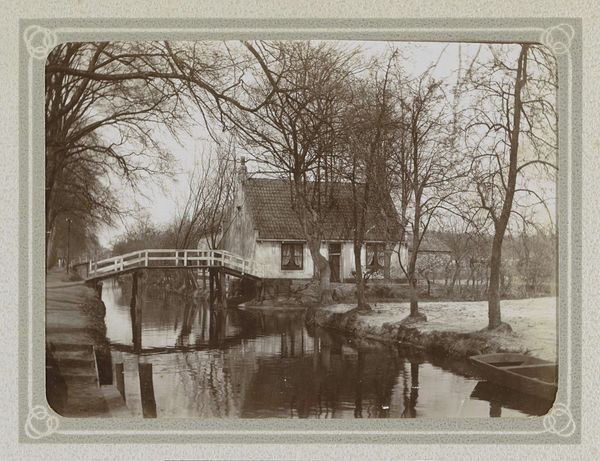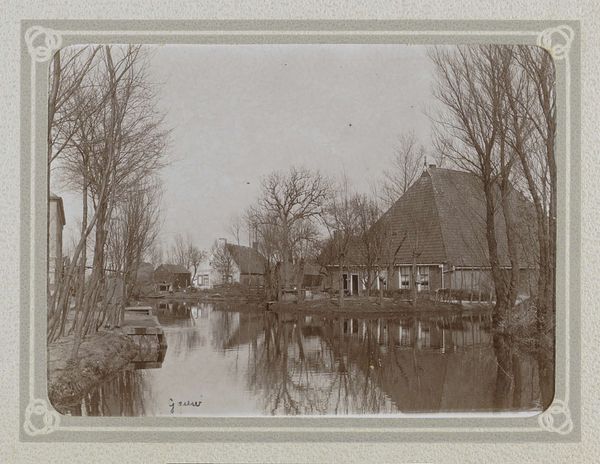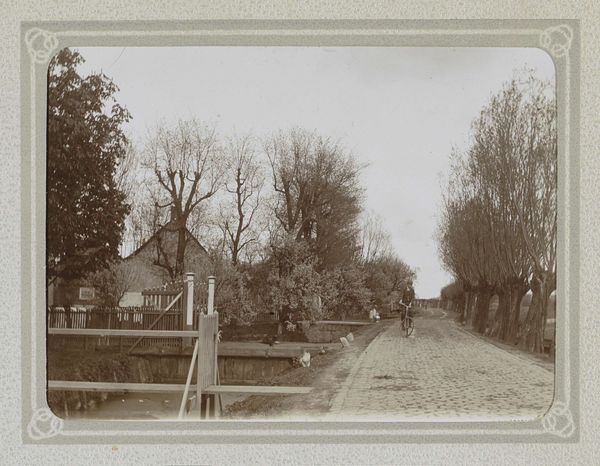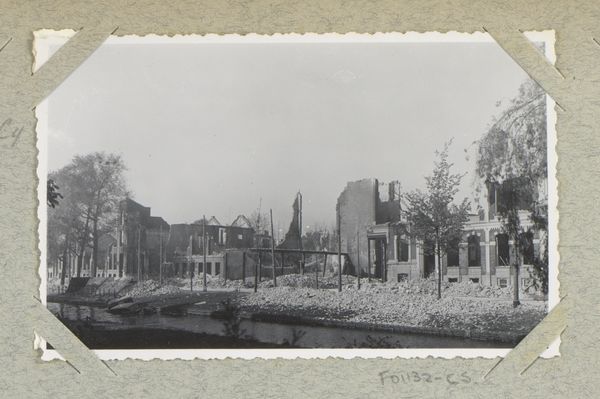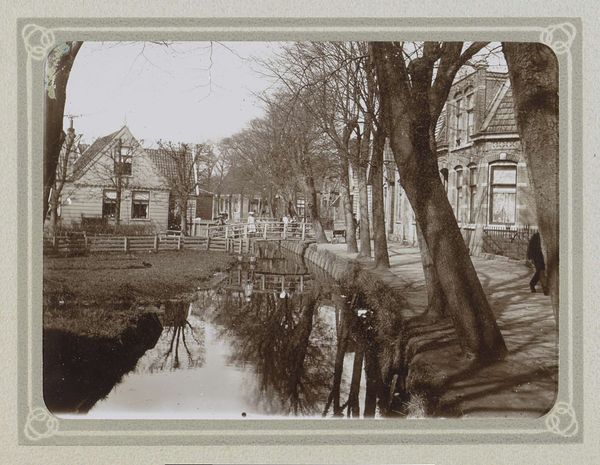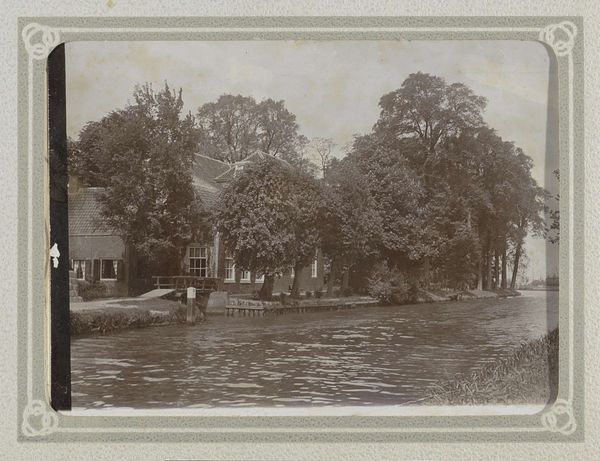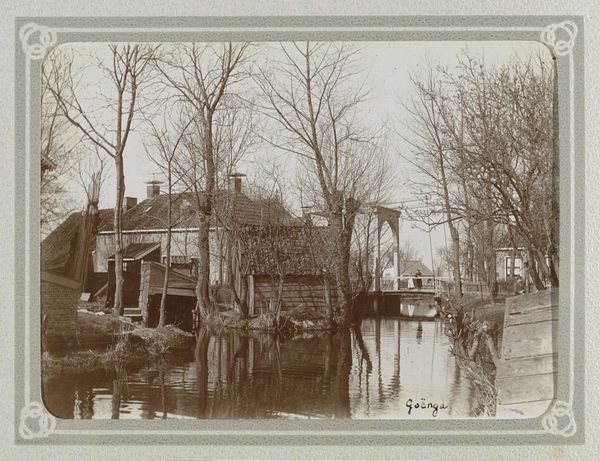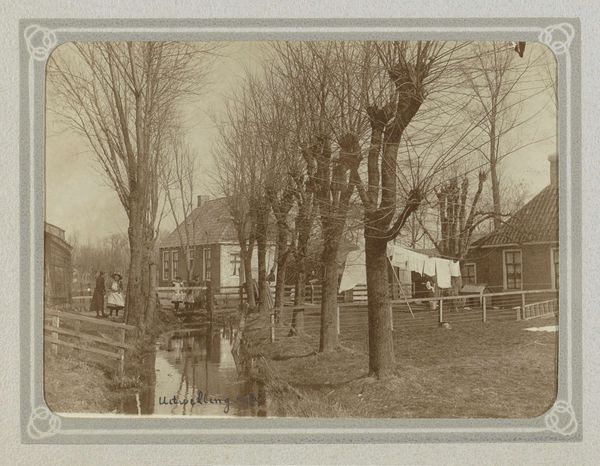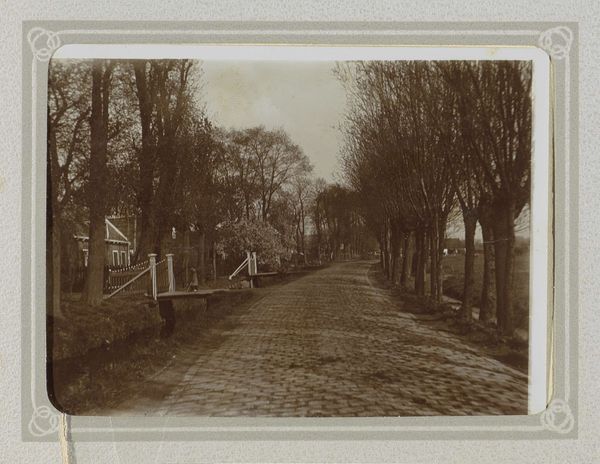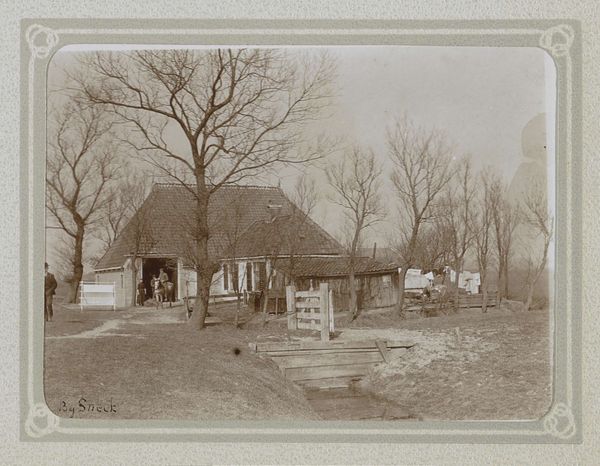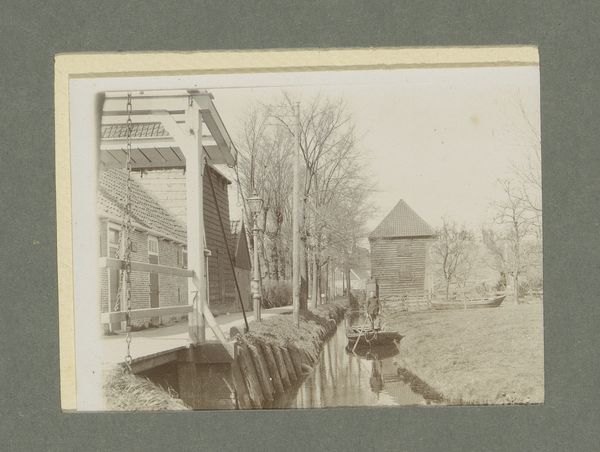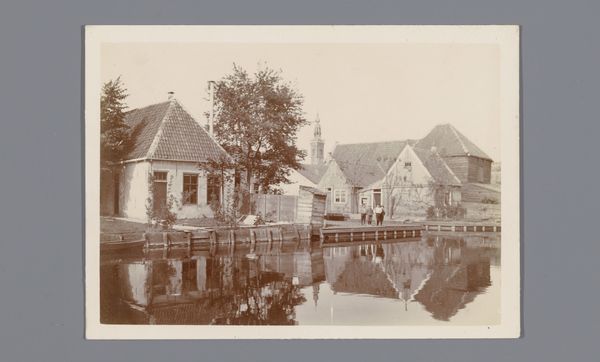
photography
#
landscape
#
historic architecture
#
traditional architecture
#
photography
#
cityscape
Dimensions: height 81 mm, width 110 mm
Copyright: Rijks Museum: Open Domain
Editor: We’re looking at “Huizen aan een water in Oosterend,” a photograph from around 1905-1907 by Folkert Idzes de Jong. It's a cityscape, almost ghostly with the bare trees and still water. What do you see in this image that speaks to a larger historical context? Curator: What strikes me is the seeming tranquility, a sort of rural idyll. However, early 20th-century Dutch photography, like this, often presents a carefully constructed image of national identity, particularly emphasizing regional cultures. Think about what isn't shown: where are the signs of industrialization, urbanization, or social unrest common in that era? Editor: That’s interesting. I hadn't considered what's *not* there. So you're saying the photograph is promoting a certain image? Curator: Precisely. The image could be seen as promoting a sense of stability and continuity rooted in the past, maybe masking some complex social dynamics of the time. Consider how representations of rural life often served political agendas, particularly around concepts of nationhood and belonging. Who gets to belong and what does belonging mean? Editor: So, it's more than just a simple cityscape; it's a carefully curated message about Dutch identity? Curator: Absolutely. By focusing on traditional architecture and serene waterways, the photographer seems to consciously construct a narrative of harmony and tradition, subtly shaping the viewer's understanding of Dutch culture and history. How might that influence contemporary conversations on regional identity? Editor: I now realize that analyzing what's included, but especially what's excluded, opens up many avenues of discussion beyond a simple aesthetic appreciation. Curator: Exactly! Examining this image prompts reflection on representation, power, and the construction of historical narratives that have shaped our contemporary perceptions.
Comments
No comments
Be the first to comment and join the conversation on the ultimate creative platform.

